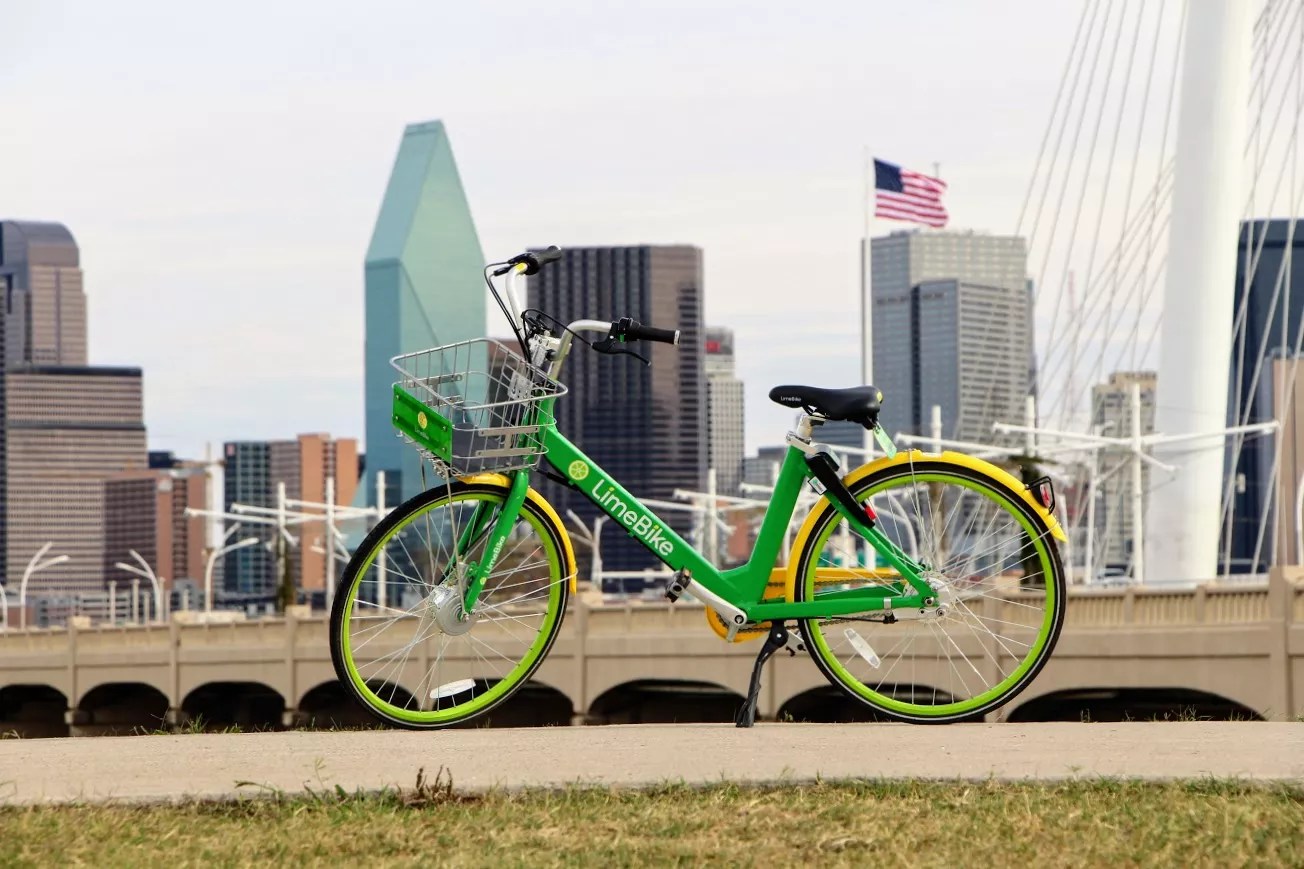
LimeBike

Audio By Carbonatix
For now, as bike sharing in Dallas rolls toward the end of its unregulated Wild West phase, the game for the five companies in business in the city has been pretty simple. They’ve put as many of their bikes on the streets as they can, mostly thanks to a stream of Silicon Valley or Chinese venture capital, and promoted their brands through friendly interviews given to local media and with vibrantly colored bikes and promises of $1 rides. To survive long-term in a city that’s shown no willingness to invest in or contribute to bike sharing, however, the companies are going to have to prove themselves financially viable and able to cope with whatever regulations the city places on them later this year.
Figuring out the financial prospects, either long- or short-term, for LimeBike, Ofo, VBikes, Spin and MoBike isn’t exactly straightforward. None of the companies is publicly traded, nor have any of them released any information about profits and losses. The best hard data available from the companies is a 2017 year-end report issued by LimeBike, which lists some of the successes the company says it’s had since launching in Dallas the second week of August.
LimeBike says it had about 3,800 bikes on the ground in Dallas last week, short, but not by much, of the 5,000 the company hoped to have in the city by the end of 2017. The company says its Dallas bikes have been ridden 105,000 miles at an average of 1.3 miles per trip, which means Dallas’ LimeBikes have been taken for about 81,000 rides. Let’s start there.
The math here is going to be a little bit back of the napkin, but LimeBike launched in August with 180 bikes in Dallas. By November, the company had 1,500 in the city when it added 1,000 over the span of a single week, according to a report from KXAS-TV (NBC 5). Going with a low estimate, it’s fair to say that the company has had an average of 1,500 bikes available to Dallas users during the 140 or so days the company’s been in service. Divide the 81,000 by 1,500, and you get 54 rides per bike, less than a ride every two days.
According a study from the National Association of City Transportation Officials, a dockless bike-share startup charging $1 with 2,000 bikes would need to rack up about 4 rides per bike, per day in order to break even. The study considered bike costs of $200 each, 15 percent overhead, bike replacements every two years and a staff of eight people making $16 per hour for a company’s first 200 bikes, followed by an additional staffer for every 50 new bikes. New York City’s Citi Bike, the most popular bike-share system in the United States, averages 3.8 rides per bike, per day annually.
Michael Andersen, a reporter who’s extensively covered bike share in all its variations for BetterBikeShare.org and BikePortland.org, says that, for now, the fact that LimeBike and its competitors likely aren’t making money in Dallas is OK. They are, after all, startups that have convinced venture capital firms that they’re worth investing in. At some point, however, the companies will have to make money, Andersen says.
“Bikes can’t magically make things change by themselves.” – Michael Andersen
“The real question is, once they have this infrastructure and reputation and consumer relationships in place, can they then operate profitably?” Andersen says.
For that to happen, the companies will have to save money on operating costs. Cutting down on wages paid to employees or the number of employees per bike lowers the number of daily trips it would need to average in order to break even. Dockless companies, unlike those operated by cities with public money, aren’t under any obligation to rebalance bikes’ locations whenever they clump together or become unavailable in a given area.
“It seems like part of the idea for [the dockless companies] is they’re going to do a lot less rebalancing,” Andersen says. “They can say, ‘Well, if you can’t find a bike, that’s too bad.’ That would cut down on the operations costs.”
The other piece of the puzzle is increasing the number of rides per bike, something that could become especially important if Dallas caps the number of bikes in the city or begins charging the companies to use its right-of-way. In Dallas, building ridership dramatically could prove challenging because of the city’s lack of bike infrastructure.
“It’s not happening in a vacuum. You’re doing this in a city where there are relatively high car ownership rates, extremely below average bike infrastructure and a lot of destinations that are spread out,” Andersen says. “All of those things could change and have been changing, but bikes can’t magically make things change by themselves.”